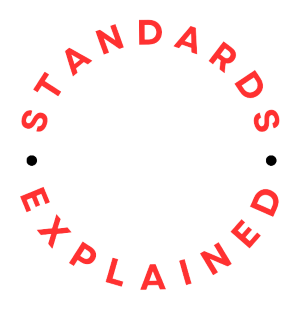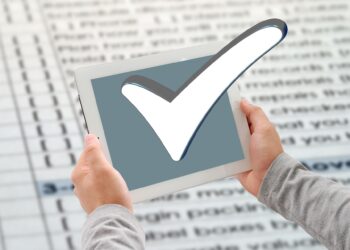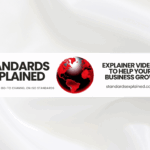ISO 50001:2018 Energy Management Systems — Requirements with guidance for use is an international standard that provides guidelines and requirements for energy management within an organization. It provides a framework of requirements for organizations to:
- develop a policy for more efficient use of energy;
- fix targets and objectives to meet the policy;
- use data to better understand and make decisions about energy use;
- measure the results;
- review how well the policy work;
- continually improve energy management.
This publication was last reviewed and confirmed in 2024; therefore, this version remains current.
What does it cover?
| Introduction |
| 1 Scope |
| 2 Normative references |
| 3 Terms and definitions |
| 3.1 Terms related to organization |
| 3.2 Terms related to management system |
| 3.3 Terms related to requirement |
| 3.4 Terms related to performance |
| 3.5 Terms related to energy |
| 4 Context of the organization |
| 4.1 Understanding the organization and its context |
| 4.2 Understanding the needs and expectations of interested parties |
| 4.3 Determining the scope of the energy management system |
| 4.4 Energy management system |
| 5 Leadership |
| 5.1 Leadership and commitment |
| 5.2 Energy policy |
| 5.3 Organization roles, responsibilities and authorities |
| 6 Planning |
| 6.1 Actions to address risks and opportunities |
| 6.2 Objectives, energy targets and planning to achieve them |
| 6.3 Energy review |
| 6.4 Energy performance indicators |
| 6.5 Energy baseline |
| 6.6 Planning for collection of energy data |
| 7 Support |
| 7.1 Resources |
| 7.2 Competence |
| 7.3 Awareness |
| 7.4 Communication |
| 7.5 Documented information |
| 8 Operation |
| 8.1 Operational planning and control |
| 8.2 Design |
| 8.3 Procurement |
| 9 Performance evaluation |
| 9.1 Monitoring, measurement, analysis and evaluation of energy performance and the EnMS |
| 9.2 Internal audit |
| 9.3 Management review |
| 10 Improvement |
| 10.1 Nonconformity and corrective action |
| 10.2 Continual improvement |
| Annex A Guidance for use |
| A.1 General |
| A.2 Relationship between energy performance and the EnMS |
| A.3 Clarification of terminology |
| A.4 Context of the organization |
| A.5 Leadership |
| A.6 Planning |
| A.7 Support |
| A.8 Operation |
| A.9 Performance evaluation |
| A.10 Improvement |
| Annex B Correspondence between ISO 50001:2011 and ISO 50001:2018 |
Implementing ISO 50001
Implementing an Energy Management System (EnMS) in conformity with ISO 50001 involves establishing a structured approach to efficiently manage energy consumption and reduce environmental impact within an organization.
1. Leadership and Commitment
- Gain commitment from top management to implement and support the EnMS in accordance with ISO 50001.
- Appoint an Energy Manager or Coordinator to lead the implementation efforts.
2. Scope Determination
Determine the scope of your EnMS, including the activities, locations, and processes that will be covered by conformity with ISO 50001.
3. Energy Policy
- Develop an energy policy that reflects your organization’s commitment to efficient energy use and conformity with ISO 50001.
- Ensure the policy is communicated throughout the organization.
4. Legal and Regulatory Compliance
Ensure that your organization is aware of and complies with all applicable energy-related laws, regulations, and standards.
5. Energy Review
- Conduct an initial energy review to identify and assess energy consumption, energy sources, and significant energy uses.
- Determine the energy performance baseline.
6. Setting Energy Objectives and Targets
- Set specific, measurable, achievable, relevant, and time-bound (SMART) energy objectives and targets.
- Ensure they align with your organization’s energy policy and significant energy uses.
7. Energy Management Programs
- Develop plans and programs to achieve the established energy objectives and targets.
- Assign responsibilities and allocate resources for their implementation.
8. Operational Control and Procedures
- Establish procedures and work instructions to control activities related to significant energy uses.
- Ensure employees are aware of and follow these procedures.
9. Energy Performance Monitoring and Measurement
- Define Key Performance Indicators (KPIs) and metrics to assess the performance of your EnMS.
- Implement monitoring and reporting systems to track energy consumption and performance.
10. Data Collection and Analysis
- Collect data related to energy consumption and other relevant factors.
- Analyze data to identify energy-saving opportunities and areas for improvement.
11. Training and Awareness
- Provide energy management training to employees and contractors.
- Raise awareness about energy efficiency and the organization’s objectives.
12. Communication and Stakeholder Engagement
- Establish effective communication channels with internal and external stakeholders regarding energy management matters.
- Engage stakeholders in energy decision-making and reporting.
13. Energy Review and Performance Evaluation
- Conduct regular energy reviews and performance evaluations to assess the effectiveness of your EnMS.
- Review the EnMS periodically to ensure its continued suitability, adequacy, and effectiveness.
14. Management Review
Hold periodic management reviews to evaluate the performance of the EnMS and identify areas for improvement.
15. Continual Improvement
- Foster a culture of continual improvement by encouraging employees to suggest and implement enhancements to energy management practices.
- Use the Plan-Do-Check-Act (PDCA) cycle for continual improvement.
16. External Audit and Certification
Engage with a certification body to perform an external audit to assess your EnMS’s conformity with the ISO 50001 standard.
17. Certification and Maintenance
- After successfully passing the certification audit, your organization will be granted ISO 50001 certification.
- Maintain and continually improve the EnMS to ensure ongoing conformity.
A few, final words…
It is crucial to recognize that conformity with ISO 50001 is an ongoing process. Organizations should continually monitor and measure their energy performance, adapt to changing energy-related risks and regulations, and actively pursue energy efficiency and sustainability goals. Regularly review and update your EnMS policies, objectives, and procedures to ensure they remain relevant and effective.
ISO 50001 can be purchased through the ISO.org website.














Comments (0)